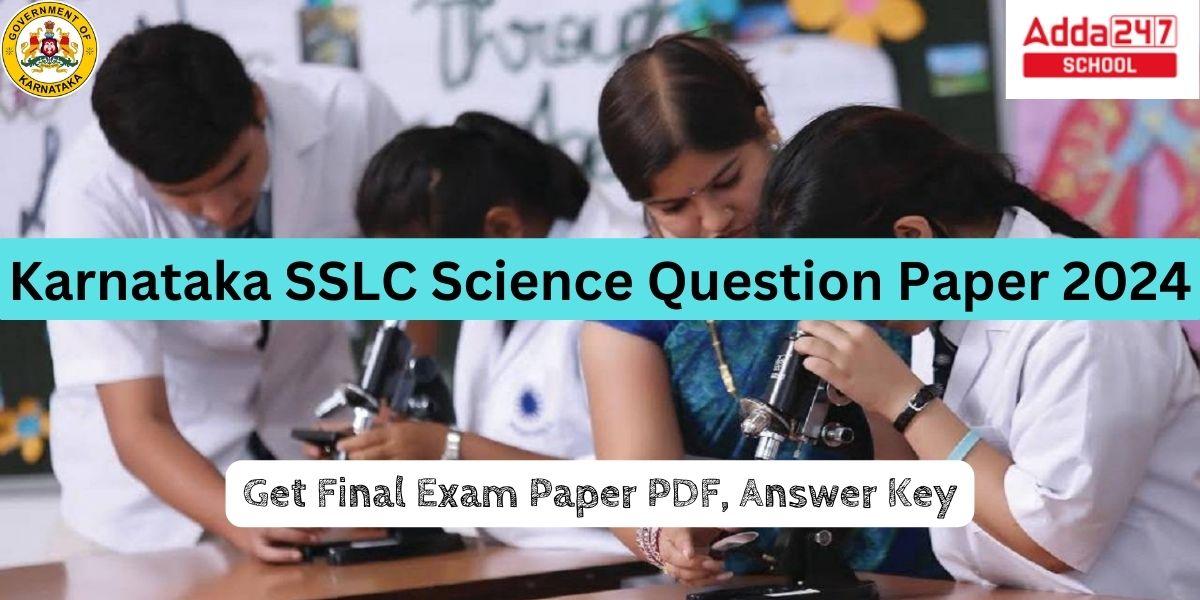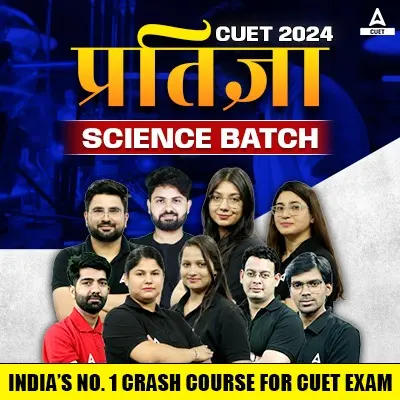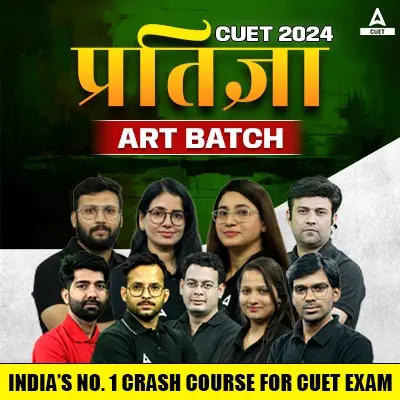Table of Contents
The SSLC Karnataka board exam is undergoing in March-April for all the subjects. The Karnataka Board 10th class Science final exam was conducted on 30 March 2024. The examination was held in a single shift across all exam centers in offline mode (pen and paper-based exam). As the examination is now over, students can access the Karnataka SSLC question paper 2024 PDF with answers here on this page. Students can also obtain the exam paper analysis here.
Karnataka SSLC Science Question Paper 2024
The Karnataka Board had formulated the SSLC Science question paper 2024 on the latest syllabus prescribed by the KSEAB. The Karnataka SSLC Science question paper 2024 contained exactly the same number of questions in the same pattern as present in the model question paper released earlier by the board. The time limit to solve the Karnataka 10th class science paper was 3 hours and 15 minutes. The Karnataka 10th class question paper consisted a good mix of questions from all parts of the syllabus.
Karnataka SSLC Science Final Exam Question Paper 2024
The SSLC Karnataka science final exam question paper 2024 is released by the Karnataka board after the completion of the exam. Students are allowed to take away the question paper with themselves after the conclusion of the exam. As the exam has been concluded, we provide students with the SSLC Science final exam question paper 2024 for free. Students can use the question paper provided on this page as a reference material for multiple purposes.
SSLC Science Final Exam Question Paper 2024 PDF Download Karnataka
The PDF for the SSLC Science Final exam question paper has been given below for download for the Karnataka Board.
PDF to be uploaded soon
Karnataka 10th Science Paper Analysis 2024
The Karnataka SSLC Science question paper has been assessed and found to be of moderate difficulty. The paper featured questions from physics, chemistry, and biology, with a balanced distribution among the three areas. Students and teachers have usually responded positively to the question paper. The Karnataka Board 10th Science Exam analysis includes the following general aspects:
- All questions were based on the authorized syllabus.
- The question paper maintained a suitable difficulty level, challenging pupils without overwhelming them.
- The majority of the questions were designed to assess students’ conceptual understanding and problem-solving abilities.
- According to reports, the physics part included questions about light reflection and refraction, as well as electricity.
- Chemistry questions covered topics such as chemical reactions, carbon and its compounds, metals, and nonmetals.
- In biology, inquiries included issues such as reproduction, genetics, and ecology.
- Overall, the paper was favorably appreciated for its balanced approach and ability to successfully assess students’ understanding across three science fields.
Karnataka Class 10th Science Answer Key 2023-24
The Answer key for the Karnataka 10th science final exam question paper is being offered by us after the completion of the exam on the 30th of March 2024. The answer key is provided by our expert teachers who have years of experience teaching science to students. The answer key contain the correct answers for all the questions present in the final exam paper. The answers of the objective questions present in Physics, Chemistry and Biology is given below.
Part – A (Physics)
- B
- A
- D
Part – B (Chemistry)
14) C
15) B
16) D
Part – C (Biology)
27) C
28) A
30) (i) x – Aorta, y – Upper/Lower Vena cava
(ii) Veins
SSLC Science Model Question Paper 2024 Karnataka Board
The Karnataka 10th class science model question paper 2024 is the most trusted resource for the final exam paper to be held on March 30, 2024. The SSLC Science model question paper 2024 has been created after the careful consideration of the exam syllabus and the exam pattern. The model paper consists of all the important questions that students must practice for the exam. The questions present in the Science model question paper have high chances of occurrence in the actual board exam.
Karnataka 10th Class Science Model Paper 2024
The Karnataka 10th class science model paper 2024 has been made by the experienced board members and expert teachers. The questions in the model paper has been carefully selected that gives students an idea about the nature of questions that can be asked in the annual final exam. The same members and teachers also oversee the formulation of the final exam paper, making questions of the model paper highly important for the final exam. That is why, it is must for every board aspirant to go through the Karnataka 10th Science model question paper 2024.
Karnataka Board SSLC Science Important Questions 2024
The questions important for the SSLC science exam paper has been provided below. The important questions contain such questions which have been repeatedly asked in the exam from the previous few years. By solving these important questions, students will be able to score more marks in the exam.
Q) The device used to change the resistance at many times in the electric circuit is
(A) Electric generator (B) Electric motor
(C) Galvanometer (D) Rheostat
Q) The correct statement among the following related to the Concave lens is,
(A) Converges the light rays (B) forms inverted image
(C) forms real image (D) diverges the light rays
Q) The resistivity (Ωm) of four materials A, B, C and D are 6.84×10-8, 1.62×10-8, 5.20×10-8 and 2.63×10-8 respectively. Which of these materials has very less electric conductivity?
(A) Material B (B) Material C
(C) Material A (D) Material D
Q) What is solenoid? List the properties of the magnetic field due to the flow of electric current in a solenoid.
Q) How does rainbow form in nature? Explain.
Q) Convex mirror is commonly used as a rear-view mirror in vehicles. Why? Write the relationship between the focal length and radius of curvature of a convex mirror.
Q) Ray of light travelling in air enters obliquely into water. Does the light ray bend towards the normal or away from the normal? Why?
Q) Draw the symbol diagram of two electric cells that are connected in series in an electric circuit.
Q)What is ‘Optic centre’ of spherical lens?
Q) (a) Two resistors of resistance 5Ω and 20Ω are connected in parallel and connected to a 12V battery. Calculate the total resistance in the electric circuit and the total current flowing in this circuit.
(b) 200 J of heat is produced in two seconds in a 8 Ω resistance. Find the potential difference across the resistor.
Q) How power is generated from nuclear energy? Explain. Write any two hazards of nuclear power generation.
Q) Draw the ray diagram of image formation when the object is kept at ‘C’ of the concave mirror. With the help of the ray diagram mention the position and the nature of the image formed. (F: Principal focus of the
mirror, C: Centre of curvature of mirror)
Q) Explain the method of production of biogas in biogas plant and write any two characteristics of biogas.
Q) (a) What is meant by power of accommodation of the eye ?
(b) What is myopia (near sightedness)? What are the reasons that cause this defect ?
Q) Stars appear to be twinkling. Why? Explain. What are the reasons for the appearance of the sun in red colour during sunrise?
Q) The Chemical equation that represents neutralisation reaction among the following is
(A) Sodium Hydroxide + Hydrochloric acid → Sodium Chloride + Water
(B) Barium Chloride + Sulphuric acid → Barium sulphate + Hydro Chloric acid
(C) Manganese dioxide + Hydrochloric acid → Manganese chloride + Water + Chlorine
D) Silver nitrate + Hydrochloric acid → Silver chloride + Nitric acid
Q) “Properties of elements are periodic function of their atomic number”. This law was proposed by
(A) Dobereiner (B) Mendeleev
(C) Newlands (D) Henry Moseley
Q) The substance that converts red litmus paper into blue colour is
(A) KOH Solution (B) distilled water
(C) dilute solution of HCl (D) concentrated solution of HNO3
Q) Calcium oxide reacts with water to form slaked lime. What type of Chemical reaction is this? Write the balanced chemical equation for this reaction.
Q) What is the chemical name of bleaching powder ? Write any two uses of it.
Q) Mention the number of single bonds and double bonds present in the structure of C2H5COOH molecule.
Q) Write the electron dot structure of methane.
Q) Draw the diagram of the arrangement of apparatus to show electrolysis of water.
Q) What is concentrated acid? Name the acid present in the stinging hair of nettle leaves.
Q) Give reason.
i) Ionic compounds have high melting and boiling points.
ii) Ionic compounds in solid state do not conduct electricity.
Q) AIDS : Virus : : Warts : ________________
(A) Bacteria (B) Fungus
(C) Protozoan (D) Virus
Q) Algae —> Small insects —> Large insects —> Small fish —> Large fish —> Human. The arrangement of trophic levels in this food chain are in the
(A) increasing order of energy availability.
(B) increasing order of both energy availability and storage of harmful chemicals.
(C) increasing order of storage of harmful chemicals.
(D) decreasing order of both energy availability and storage of harmful chemicals.
Q) Draw the diagram showing the structure of closed stomata.
Q) What is the function of ozone layer?
Q) Rejuvenating ancient water harvesting systems is being encouraged. Why?
Q) (a) Tall pea plant (TT) is crossed with short pea plant (tt). What type of the plants will obtain in F1 generation? Write the genetic make up of this progeny.
(b) Forelimbs of frog, wings of bird, wings of bat, forelimbs of lizard pair them as analogous and homologous organs. Give reason for your pairing.
SSLC Karnataka Science Question Paper Pattern 2024
The SSLC Karnataka Science question paper 2024 has the weightage of 80 marks. The rest of the 20 marks is awarded through the practical examination. The question paper is divided into three parts: Part A, Part B, and Part C. There are a total of 38 questions in the question paper. The question paper contains different types of questions from objective to subjective. The SSLC Karnataka Science question paper pattern 2024 is given below in detail.
- There are three parts in the science question paper Part-A : Physics, Part-B : Chemistry, Part-C : Biology.
- This question paper consists of objective and subjective types of 38 questions.
- The Part A of the question paper has 13 questions (question no. 1 to 13) in total with multiple sub-questions. The weightage of this part is 28 marks
- The Part B of the paper also consists of 13 questions (question no. 14 to 26). This section accounts for 25 marks.
- The section C of the science paper has 12 questions (question no. 27 to 38) with many sub-questions. This section accounts for 27 marks.
SSLC Question Paper 2024, Karnataka PDF with Answers Science
The SSLC Science model question paper 2024 pdf is given below for the Karnataka board. The model question paper for both English and Kannada medium paper is provided hereunder. Students must solve the questions present in the model paper apart from the important questions given above.
Karnataka SSLC Science Model Question Paper 2024 PDF Kannada Medium)
Karnataka SSLC Science Model Question Paper 2024 PDF (English Medium)
Karnataka SSLC Science Final Exam Question Paper 2024
The SSLC Karnataka science final exam question paper 2024 is released by the Karnataka board after the completion of the exam. Students are allowed to take away the question paper with themselves after the conclusion of the exam. When the exam gets over, we will provide students with the SSLC Science final exam question paper 2024 for free. Students can use the question paper provided on this page as a reference material for multiple purposes.








 JEE Mains 2025 Session 2 Exam Live Updat...
JEE Mains 2025 Session 2 Exam Live Updat...
 CBSE Class 12 Home Science Answer Key 20...
CBSE Class 12 Home Science Answer Key 20...
 CBSE Class 12 History Answer Key 2025, G...
CBSE Class 12 History Answer Key 2025, G...

